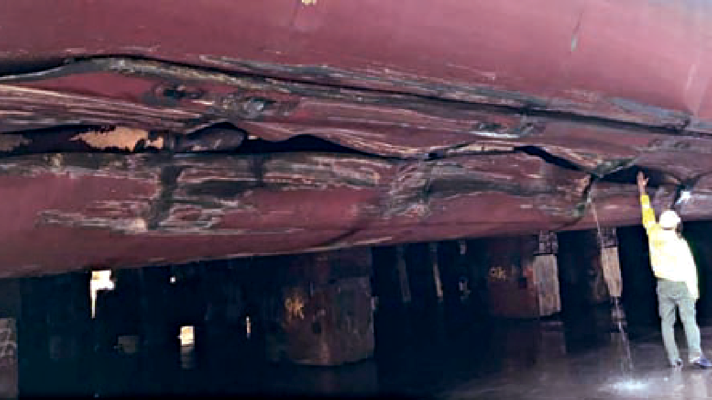An overload of work processes can contribute to losing situational awareness. The Nautical Institute emphasises this point in a recent Mars Report. In it, a ferry ended up with a ten-metre tear in its hull because a master had too many balls to keep in the air.
The Nautical Institute gathers reports of maritime accidents and near-misses. It then publishes these so-called Mars Reports (anonymously) to prevent other accidents from happening. A summary of this incident:
A roro freight ferry was underway in darkness, outbound from a port in restricted waters. The master, who was new on board, had the con. The officer of the watch (OOW) and another officer were also on the bridge. With a planned course alteration coming up, the master switched from autopilot to hand steering, which he took himself (point two in the diagram). The vessel was now making about 14.5 knots and the master was navigating principally by visual means.
The master applied 10° of starboard helm and the ferry started to turn to starboard. He assessed that the ferry was turning too quickly and put the helm to midships. The OOW then reported that the ferry was clear of the buoy on the port side. At about the same time, the master realised that the vessel was further to the north than he intended. He applied starboard helm in increasing amounts to keep the ferry within the buoyed channel.
Shortly afterwards, a prolonged loud noise and a shuddering vibration was heard and felt throughout the vessel (point 7 in the diagram). An inspection later determined that there was significant damage to the ferry’s port side, including a ten-metre tear near the turn of the bilge; adjoining spaces had flooded to the waterline.
The ferry quickly developed a 7° port list. It was established from the ballast computer that seawater had entered the port heeling tank. Ballast transfer was commenced to return the ferry upright.

Investigation findings
- The official investigation found, among other things, that the turn to starboard was late and the master had insufficient support from the bridge team even though they had recently completed bridge resource management (BRM) training. Additionally, the master himself was steering by hand, which reduced his ability to maintain an overview of the situation. The lack of support from the bridge team made him a single point of failure.
- The navigational practices being used by the bridge team did not fully incorporate the electronic aids available and were insufficient to assure the vessel’s safe nighttime outbound passage.
Advice from The Nautical Institute
- BRM training is good theory, but mariners must then put into practice what they have learned in order to reduce the chances of single point failure.
- Under normal circumstances the speed in this accident (14.5 knots), may not qualify as excessive. But given the darkness and narrow channel navigated it can be argued that the speed was a contributing factor. Remember that slowing down is often the best option when external events out of your control are risk multipliers. At 7 knots, the bridge team would have had twice the time to assess the situation and make adjustments.
- As we have seen in previous Mars Reports, assuming the con and also helm and engine responsibilities, in darkness and restricted waters, created an overload of work processes that reduced the person’s ability to maintain an overview of the situation.
Mars Reports
This accident was covered in the Mars Reports, originally published as Mars 202061, that are part of Report Number 337. A selection of this Report has also been published in SWZ|Maritime’s December 2020 issue. The Nautical Institute compiles these reports to help prevent maritime accidents. That is why they are also published on SWZ|Maritime’s website.
More reports are needed to keep the scheme interesting and informative. All reports are read only by the Mars coordinator and are treated in the strictest confidence. To submit a report, please use the Mars report form.








